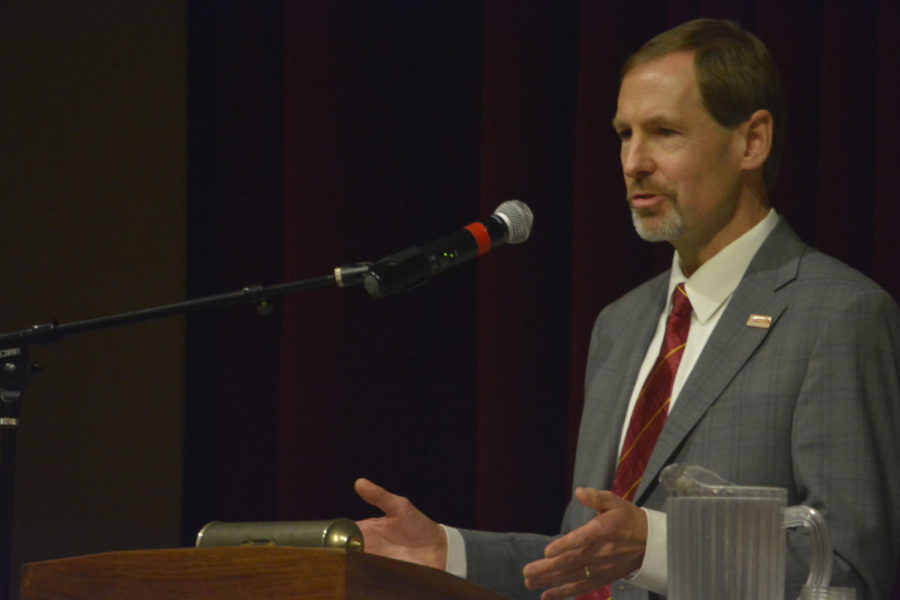- App Content
- App Content / News
- News
- News / Politics And Administration
- News / Politics And Administration / Campus
- News / Politics And Administration / State
Provost responds to potential midyear cuts at Faculty Senate meeting
Jonathan Wickert, Senior Vice President and Provost, speaks about Pat Miller, director of the Lectures Program, during the 60th anniversary celebration of the Lectures Program in the Great Hall of the Memorial Union on Aug. 30.
February 13, 2018
Iowa’s Legislature is currently debating a new line of midyear budget cuts for the state—which would include cuts to Iowa State—following revenue shortfalls.
The Senate’s first version of the appropriations bill, proposed three weeks ago, would have cut funding to Iowa Regent universities by a combined $19.2 million including a $6.9 million cut from Iowa State.
Adjustments from the Senate later lowered this number to $14.2 million and allowed the Board of Regents to decide which of the three regent universities would see the brunt of these cuts.
Iowa State Senior Vice President and Provost Jonathan Wickert said at the Faculty Senate meeting on Feb. 13, that no decisions have been made, but if these budget bills are passed “draconian steps” will be taken.
“With the last two years seeing $11.5 million in cuts to Iowa State’s budget, these budget changes will cut to the bone,” Wickert said. “The possible implications of these cuts for Iowa State include faculty furloughs, cancelled classes and discontinued student aid.”
In the end, any funding issue at Iowa State will force tuition to raise as it is “the largest portion of the budget by a factor of two,” Wickert said.
The House proposed their version of this legislation, House Study Bill 648, on Feb. 3, which would cut funding to Regent universities by a total of $8.1 million.
Both of these proposed cuts are still higher than the Governor’s recommended cut of $5.1 million to the Board of Regents, which was proposed as a result of midyear revenue shortfalls and predictions made by the members of the Revenue Estimating Conference.
Lower than predicted revenues make this the second year in a row the state has had to adjust its budget numbers in the middle of legislative sessions.
















